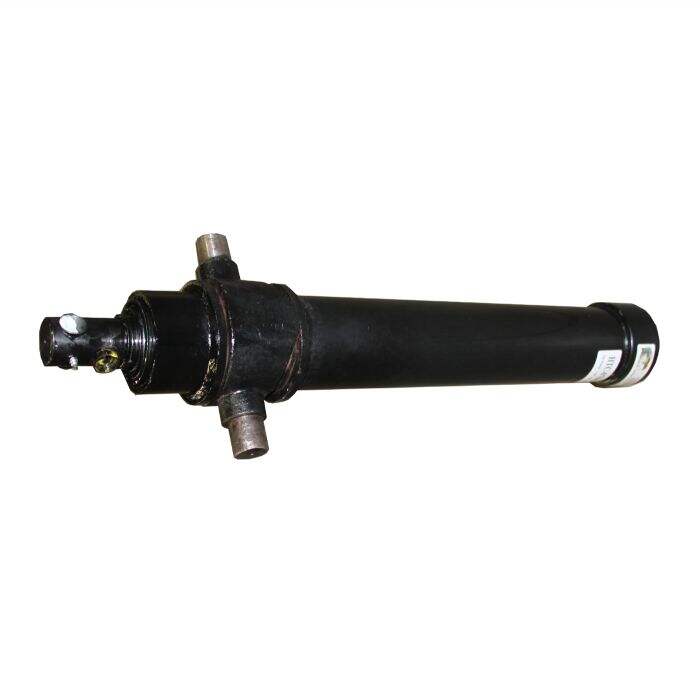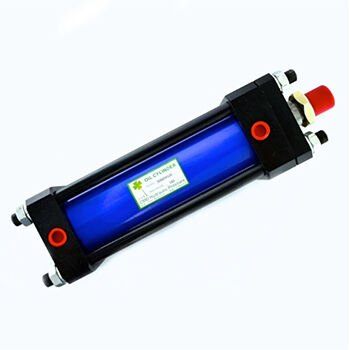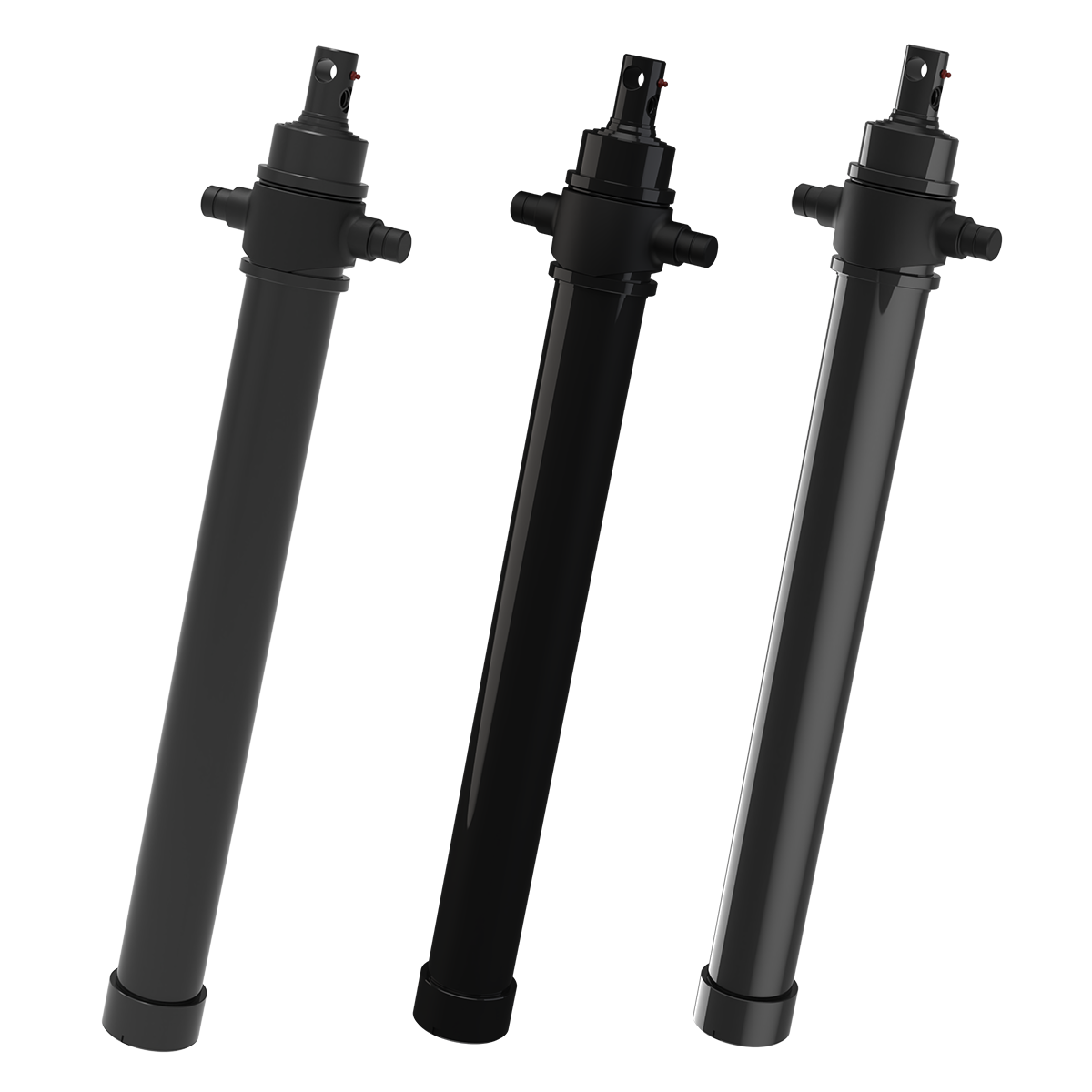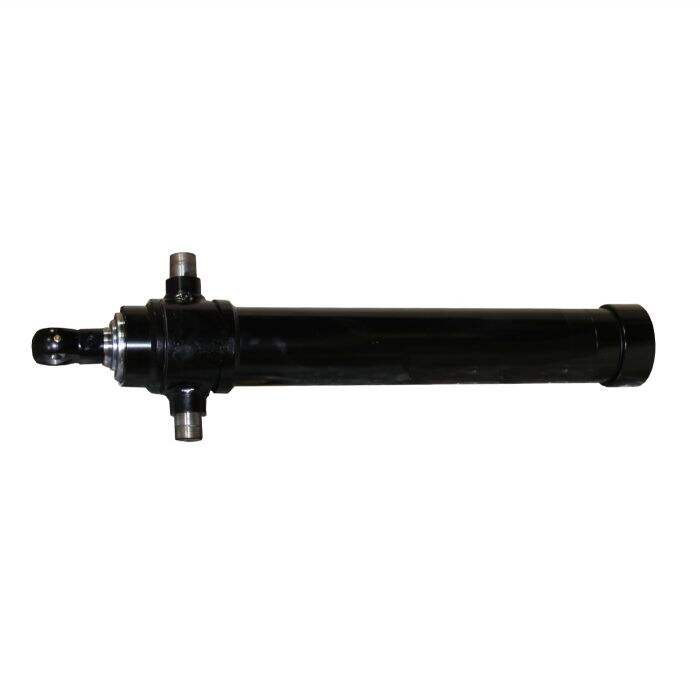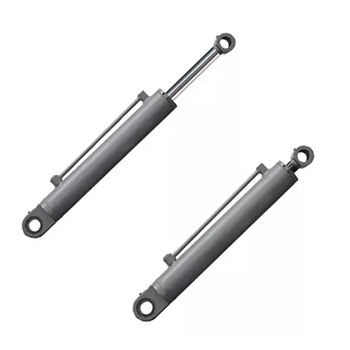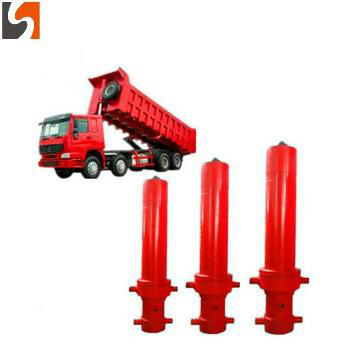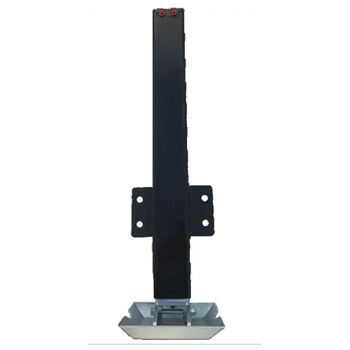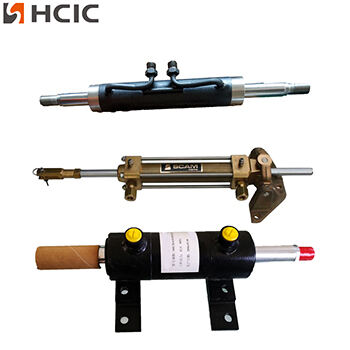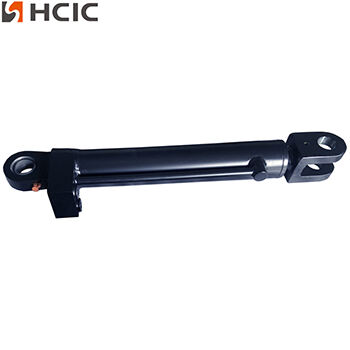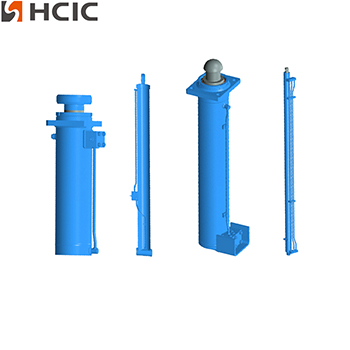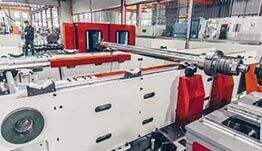Single-Acting vs. Double-Acting Telescopic Cylinders A Comprehensive Analysis
Single-Acting vs. Double-Acting Telescopic Cylinders: A Comprehensive Analysis
Introduction
Hydraulic cylinders are essential components in a wide range of machinery, from construction equipment to industrial machinery and agricultural tools. Among these hydraulic cylinders, telescopic cylinders stand out for their ability to extend and retract over a significant distance compared to their retracted length. This unique feature makes them indispensable in applications where space is limited, and a long stroke is required. Telescopic cylinders come in two primary types: single-acting and double-acting. Understanding the differences between these two types is crucial for selecting the right cylinder for a specific application. This essay delves into the intricacies of single-acting and double-acting telescopic cylinders, exploring their design, functionality, advantages, disadvantages, and applications.
The Basics of Telescopic Cylinders
Telescopic cylinders, also known as multi-stage cylinders, consist of multiple nested stages that extend sequentially. This design allows the cylinder to achieve a long stroke while maintaining a compact retracted length. Telescopic cylinders are commonly used in applications such as dump trucks, cranes, and lifting equipment, where space constraints and the need for extended reach are prevalent.
Single-Acting Telescopic Cylinders
Single-acting telescopic cylinders operate using hydraulic pressure to extend the cylinder stages, while retraction relies on an external force, such as gravity or a spring. This type of cylinder is characterized by its simplicity and cost-effectiveness.
Design and Functionality
A single-acting telescopic cylinder typically consists of a base, multiple nested stages, and a hydraulic port. When hydraulic fluid is pumped into the cylinder, it exerts pressure on the base of the innermost stage, causing it to extend. As the innermost stage reaches its full extension, the hydraulic fluid continues to flow into the next stage, and the process repeats until all stages are fully extended. Retraction occurs when the hydraulic pressure is released, and an external force pushes the stages back into their retracted positions.
Advantages of Single-Acting Telescopic Cylinders
Simplicity: The design of single-acting cylinders is relatively simple, with fewer components compared to double-acting cylinders. This simplicity translates to ease of maintenance and lower costs.
Cost-Effectiveness: Single-acting cylinders are generally more affordable to manufacture and maintain due to their simpler design and fewer moving parts.
Weight: These cylinders are typically lighter than double-acting cylinders, making them suitable for applications where weight is a critical factor.
Disadvantages of Single-Acting Telescopic Cylinders
Limited Retraction Control: The reliance on external forces for retraction can limit the control over the retraction process, making it less precise and potentially slower.
Dependence on Orientation: Single-acting cylinders are often dependent on gravity for retraction, which can restrict their orientation and application in certain machinery.
Less Versatility: The single-acting design may not be suitable for applications that require precise control over both extension and retraction.
Applications of Single-Acting Telescopic Cylinders
Dump Trucks: Single-acting telescopic cylinders are commonly used in dump trucks to lift the truck bed, allowing for the efficient unloading of materials.
Agricultural Equipment: These cylinders are used in various agricultural machinery, such as grain augers and trailers, where simplicity and cost-effectiveness are essential.
Cranes and Lifting Equipment: Single-acting cylinders are employed in cranes and other lifting equipment to achieve the required lifting height without complex retraction mechanisms.
Double-Acting Telescopic Cylinders
Double-acting telescopic cylinders, on the other hand, use hydraulic pressure for both extension and retraction of the cylinder stages. This type of cylinder offers greater control and versatility, making it suitable for a wider range of applications.
Design and Functionality
A double-acting telescopic cylinder consists of a base, multiple nested stages, hydraulic ports for both extension and retraction, and a piston mechanism. When hydraulic fluid is pumped into the extension port, it exerts pressure on the piston, causing the stages to extend sequentially. To retract the stages, hydraulic fluid is pumped into the retraction port, exerting pressure on the opposite side of the piston and forcing the stages back into their retracted positions.
Advantages of Double-Acting Telescopic Cylinders
Precise Control: The use of hydraulic pressure for both extension and retraction allows for precise control over the cylinder's movement, making it suitable for applications that require accurate positioning.
Versatility: Double-acting cylinders can be used in a variety of orientations and applications, as they do not rely on external forces for retraction.
Speed: The hydraulic retraction mechanism enables faster retraction compared to single-acting cylinders, enhancing overall operational efficiency.
Disadvantages of Double-Acting Telescopic Cylinders
Complexity: The design of double-acting cylinders is more complex, with additional components such as pistons and multiple hydraulic ports. This complexity can lead to higher manufacturing and maintenance costs.
Weight: Double-acting cylinders are typically heavier than single-acting cylinders due to their additional components and hydraulic circuits.
Cost: The increased complexity and number of components result in higher costs for double-acting cylinders compared to their single-acting counterparts.
Applications of Double-Acting Telescopic Cylinders
Construction Equipment: Double-acting cylinders are widely used in construction machinery, such as excavators and backhoes, where precise control and versatility are crucial.
Industrial Machinery: These cylinders are employed in various industrial applications, including presses and molding machines, where accurate positioning and force control are required.
Marine and Offshore Equipment: Double-acting cylinders are used in marine and offshore applications, such as ship cranes and oil rig platforms, where reliable and controlled movement is essential.
Comparative Analysis: Single-Acting vs. Double-Acting Telescopic Cylinders
When comparing single-acting and double-acting telescopic cylinders, several factors come into play, including design complexity, control precision, versatility, weight, and cost. Understanding these differences is key to selecting the right cylinder for a specific application.
Design Complexity
Single-acting telescopic cylinders have a simpler design, with fewer components and a single hydraulic port for extension. This simplicity makes them easier to manufacture and maintain. Double-acting cylinders, on the other hand, have a more complex design, with additional components such as pistons and multiple hydraulic ports for both extension and retraction.
Control Precision
Double-acting telescopic cylinders offer greater control precision due to their use of hydraulic pressure for both extension and retraction. This allows for accurate positioning and smooth operation. Single-acting cylinders, while effective for many applications, may lack the same level of control precision, particularly during the retraction process.
Versatility
Double-acting cylinders are more versatile, as they can be used in various orientations and applications without relying on external forces for retraction. Single-acting cylinders, however, may be limited in their orientation and application due to their dependence on gravity or other external forces for retraction.
Weight and Cost
Single-acting telescopic cylinders are typically lighter and more cost-effective than double-acting cylinders. Their simpler design and fewer components result in lower manufacturing and maintenance costs. Double-acting cylinders, while offering greater control and versatility, come with higher costs due to their complexity and additional components.
Application Suitability
The choice between single-acting and double-acting telescopic cylinders depends on the specific requirements of the application. For tasks that require precise control, versatility, and faster retraction, double-acting cylinders are the preferred choice. However, for applications where simplicity, cost-effectiveness, and weight are more critical factors, single-acting cylinders may be more suitable.
Real-World Examples and Case Studies
To further illustrate the differences between single-acting and double-acting telescopic cylinders, let's explore some real-world examples and case studies.
Dump Trucks
In the context of dump trucks, single-acting telescopic cylinders are commonly used for lifting the truck bed to unload materials. The simplicity and cost-effectiveness of single-acting cylinders make them ideal for this application, where the primary requirement is reliable lifting with minimal control over retraction.
Construction Equipment
For construction equipment such as excavators and backhoes, double-acting telescopic cylinders are often the preferred choice. These cylinders provide the precise control and versatility needed for tasks such as digging, lifting, and positioning heavy loads. The ability to control both extension and retraction with hydraulic pressure enhances the efficiency and accuracy of these machines.
Agricultural Machinery
In agricultural machinery, single-acting telescopic cylinders are used in applications such as grain augers and trailers, where simplicity and cost-effectiveness are key considerations. These cylinders provide reliable performance for lifting and tilting tasks without the need for complex retraction mechanisms.
Marine and Offshore Equipment
In marine and offshore applications, double-acting telescopic cylinders are essential for tasks such as operating ship cranes and oil rig platforms. The precise control and reliability of double-acting cylinders ensure smooth and safe operation in challenging environments.
Innovations and Future Trends
The field of hydraulic cylinders is continuously evolving, with ongoing innovations and advancements aimed at improving performance, efficiency, and sustainability. Several trends are shaping the future of single-acting and double-acting telescopic cylinders:
Smart Technology Integration
The integration of smart technology into hydraulic cylinders is a growing trend. Sensors and control systems can be incorporated into cylinders to provide real-time feedback on performance, enabling predictive maintenance and enhancing overall efficiency. This trend is particularly relevant for double-acting cylinders, where precise control is critical. By monitoring parameters such as pressure, temperature, and position, these smart systems can optimize the operation of hydraulic cylinders and extend their lifespan.
Energy Efficiency Improvements
Energy efficiency is a significant focus in the development of hydraulic cylinders. Manufacturers are exploring ways to reduce energy consumption and improve the overall efficiency of hydraulic systems. This includes the use of energy-efficient materials, advanced sealing technologies to minimize leakage, and innovative designs that reduce friction and wear. Both single-acting and double-acting telescopic cylinders stand to benefit from these advancements, making them more sustainable and cost-effective.
Sustainable Materials and Manufacturing Processes
The push for sustainability extends to the materials and manufacturing processes used in hydraulic cylinder production. Manufacturers are increasingly adopting eco-friendly materials and practices to reduce their environmental impact. This includes the use of recycled and biodegradable materials, as well as energy-efficient manufacturing techniques. By embracing sustainability, companies can create hydraulic cylinders that are not only high-performing but also environmentally responsible.
Customization and Muscularity
Customization and muscularity are emerging trends in the hydraulic cylinder market. Customers are seeking tailored solutions that meet their specific needs, and manufacturers are responding by offering customize cylinder designs. Modular components allow for easy assembly and disassemble, enabling quick repairs and replacements. This trend is particularly beneficial for complex applications where standard cylinders may not suffice.
Enhanced Safety Features
Safety is a paramount concern in the design and operation of hydraulic cylinders. Advances in safety features aim to minimize the risk of accidents and ensure the safe operation of machinery. This includes the development of fail-safe mechanisms, overload protection systems, and enhanced control interfaces. Double-acting telescopic cylinders, with their intricate control systems, are at the forefront of these safety innovations.
Conclusion
The comparison between single-acting and double-acting telescopic hydraulic cylinders highlights the unique advantages and applications of each type. Single-acting cylinders, with their simplicity and cost-effectiveness, are ideal for applications where basic extension and gravity-assisted retraction are sufficient. They excel in situations where weight and budget are critical considerations, such as in dump trucks and agricultural machinery.
On the other hand, double-acting cylinders offer greater control, versatility, and speed, making them suitable for more demanding applications. Their ability to use hydraulic pressure for both extension and retraction allows for precise positioning and efficient operation in various orientations. This makes them the preferred choice for construction equipment, industrial machinery, and marine applications where control and versatility are paramount.
The ongoing innovations and future trends in hydraulic cylinder technology promise to enhance the performance, efficiency, and sustainability of both single-acting and double-acting telescopic cylinders. As manufacturers continue to integrate smart technology, improve energy efficiency, adopt sustainable materials, and enhance safety features, the capabilities of hydraulic cylinders will continue to evolve, meeting the ever-changing demands of modern machinery and equipment.
In summary, the choice between single-acting and double-acting telescopic hydraulic cylinders depends on the specific requirements of the application. By understanding the strengths and limitations of each type, users can make informed decisions that optimize the performance, efficiency, and reliability of their hydraulic systems. HCIC, with its commitment to quality, innovation, and sustainability, remains at the forefront of hydraulic cylinder manufacturing, providing solutions that meet the diverse needs of industries worldwide.
HCIC is a professional hydraulic manufacturer, mainly engaged in hydraulic system design, manufacture, installation, transformation, commissioning and hydraulic components brand sales and technical services.We hope that our product can help to save your cost and improve your quality. For More details please email us "[email protected]" or google search "HCIC hydraulic"

 EN
EN
 AR
AR
 BG
BG
 HR
HR
 CS
CS
 DA
DA
 NL
NL
 FI
FI
 FR
FR
 DE
DE
 EL
EL
 HI
HI
 IT
IT
 JA
JA
 KO
KO
 NO
NO
 PL
PL
 PT
PT
 RO
RO
 RU
RU
 ES
ES
 SV
SV
 CA
CA
 TL
TL
 IW
IW
 ID
ID
 LV
LV
 LT
LT
 SR
SR
 SK
SK
 UK
UK
 VI
VI
 HU
HU
 TH
TH
 TR
TR
 FA
FA
 MS
MS
 GA
GA
 CY
CY
 KA
KA

